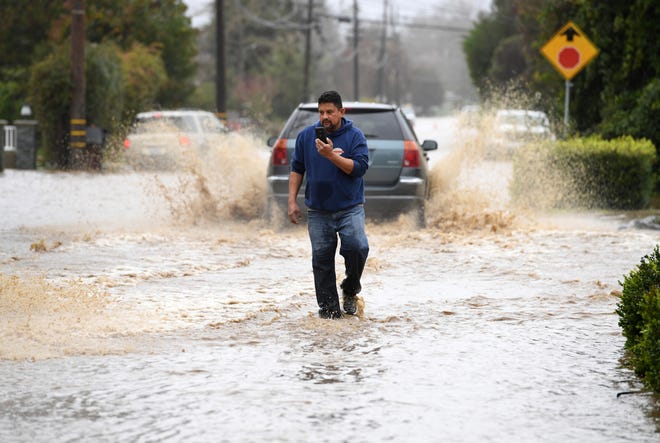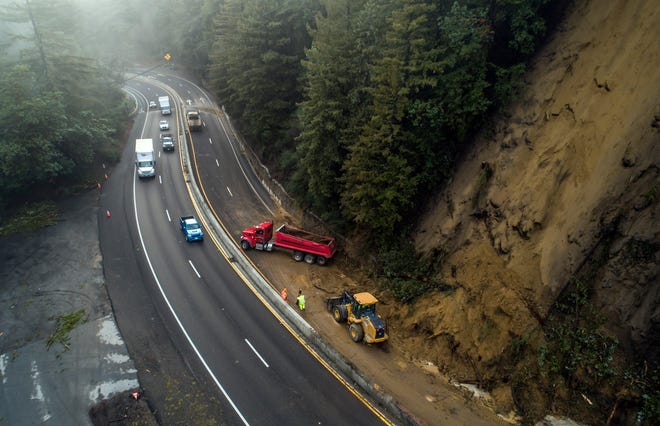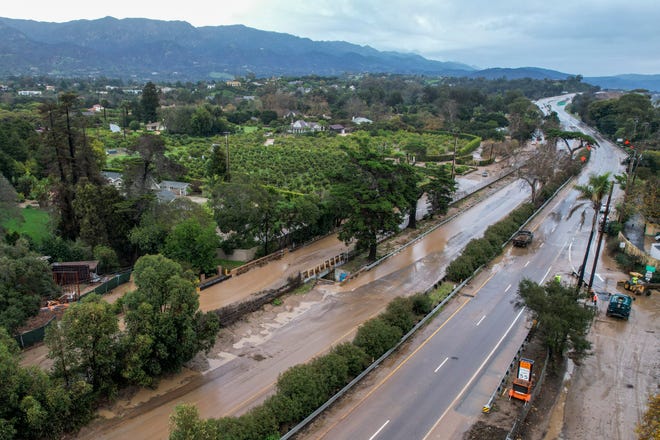SAN JOSE, California – Magdalena Moore, the principal of Jeanne R. Meadows Elementary School, waded through puddles between classroom buildings during a rare bright spot earlier this week. A slew of Pacific storms and a bomb cyclone have ravaged the San Francisco Bay Area for the last two weeks, hitting her school and several others.
Students in San Jose are part of about four million who attend schools in the nation’s flood zones, according to a report from Pew Charitable Trusts. Kids across the Golden State are the latest to be affected by a weather system that has killed several people, left billions in damage and forced many from their homes as they return to in-person learning following the winter break. The unusual rain in a state known for its clear skies and warm weather, and infrastructure not necessarily built for prolonged downpours and floods, is leaving schools to grapple with the consequences.
Some California schools have had to delay their returns from winter break, and many school officials spent the last two weeks coordinating to provide meals for displaced families and juggling disruptions in transportation due to flooded roads and fallen trees. Some lost power and internet connections and activated power outage protocols to keep classrooms open. And others have seen drops in attendance – a financial hit for schools that are in part funded by how many kids go to school each day, several school districts contacted by USA TODAY said.
Officials said they hope the situation doesn’t worsen with the forecast calling for more rain. More storms are expected to roll into Northern California this weekend and early next week.
“Keeping our fingers crossed,” said John Sasaki, a spokesman for the Oakland Unified School District.
In San Francisco, for example, Superintendent Matt Wayne and school officials are working to get sandbags, assess leaks and damages to school buildings and work with the city to clean up fallen trees to “prevent future incidents as the weather permits,” he wrote in a Jan. 9 letter to the school community. The city’s mayor issued a local proclamation of emergency last week.
“We are committed to mobilizing and responding to weather-related emergencies to mitigate the impact of the storm on school sites,” Wayne wrote in the letter, while also thanking district staff “who have been working tirelessly to ensure that our schools remain safe places where students can learn, get a nutritious meal, and be in the care of a trusted adult.”
More:98% of California homeowners don’t have flood insurance; drivers urged to ‘Turn around, don’t drown’
How are California’s schools faring after flooding, mudslides?
The situation varies. Some districts, including those in Santa Barbara, Sacramento City Unified and West Contra Costa Unified, have had to close at least one school due to the floods. But many schools across the state are staying open during the storm despite the disruptions.
Berkeley schools lost power, phone and internet connection at a few schools last week. The district welcomed kids back to school and followed power outage protocols that included “bringing in portable lighting for hallways and restrooms,” said district spokesperson Trish McDermott.

“We have had to make some small changes to bus routes due to minor local flooding, and we have experienced minor leaks in a few buildings –but nothing significant,” said McDermott. “A few athletic competitions were canceled as well.”
In Santa Cruz, where much of the city was evacuated, schools opened for the semester as planned. The district hasn’t experienced any flooding damage or outages but did fewer students than normal attended on the first day back and transportation was an issue, said Sam Rolens, a spokesperson for the district.

“We’ve had to do a bit of shuffling of our transportation routes to avoid road closures and small mudslides, but so far we’ve been able to accommodate all the students we normally serve,” said Rolens.
And in San Ramon, schools opened as normal despite flooding and issues with mud in the community that didn’t directly affect school sites, and dealt with small issues “such as leaks in the ceiling or water seeping in under a door,” said Ilana Samuels, a district spokesperson.
‘The ground is saturated’ Flooding risk festers in California as weekend rain hits
What is the state doing to help?
The California Department of Education is supporting schools and county offices of education daily with information about the weather situation to “provide technical assistance from response partners both internally and with other state and federal partners,” Brody Fernandez, a spokesperson from the department said.
On Friday, Fernandez said the state would be monitoring impacting to local county schools over the long weekend when schools are out of session.
How does flooding affect America’s schools?
The risks to schools due to flooding are likely to continue, and there’s a lingering concern from experts about learning loss due to natural disasters of the same kind.
A report from the Pew Charitable Trusts from 2017 shows the situation in California is far from the first time flooding has impacted schools.
“Of the 96,659 public schools in the United States, 2,247 are located in the 1 percent annual chance flood zone,” the report reads, adding that the “100 counties with the highest composite flood risk scores include 6,444 schools that serve nearly 4 million students.”
The organization reported at the time that 4,106 schools are located in the 0.2% annual chance flood zone, and around 2.5 million students attend those schools.Schools on the Atlantic Coast, Gulf Coast, Mississippi River corridor and southwestern Arizona are at high risk.

And in California, the PPIC Water Policy Center found that every county in the state has been declared a flood disaster area “multiple times,” leaving schools at risk.
“One in five Californians and more than $580 billion worth of structures (including contents) are vulnerable,” a 2017 report from the group reads.
Contact Kayla Jimenez at kjimenez@usatoday.com. Follow her on Twitter at @kaylajjimenez.

